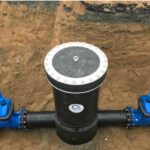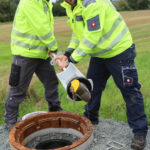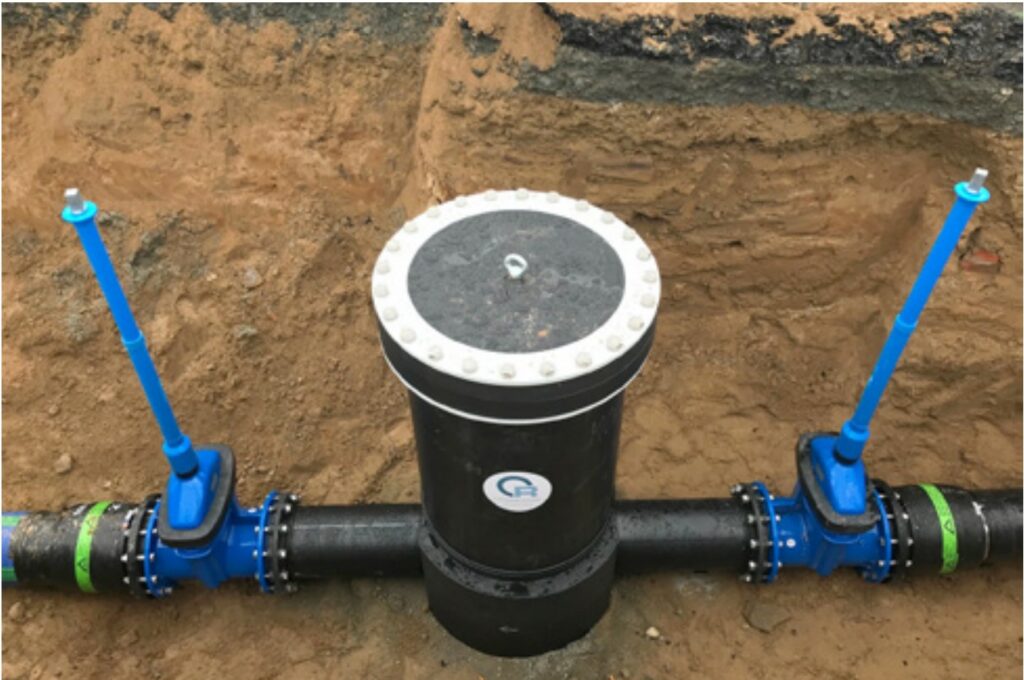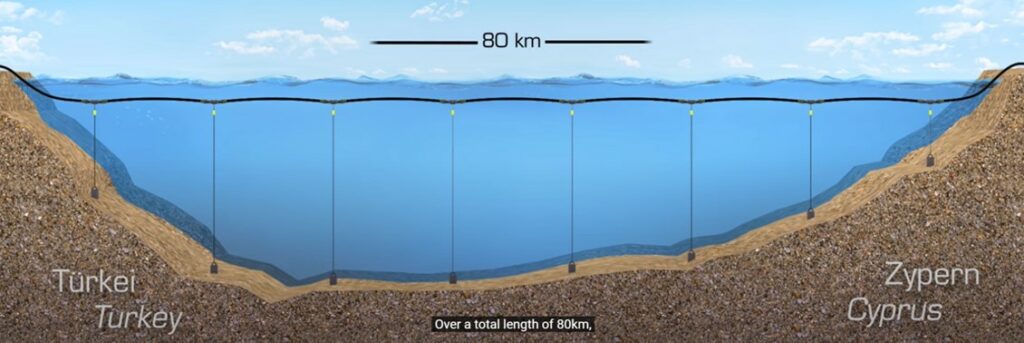In Glattfelden, a problem with deposits in the pipes has arisen. Patrick Frei, the municipality’s wastewater treatment supervisor in charge, decided to clean the pressure pipe and relies on the gentle pigging process. The biggest problem with pigging is that the pig has to be inserted into the pipeline, which means that the existing pipeline has to be dismantled and opened. This is a laborious process, which Frei was able to improve significantly with the Quick-Pig pig trap.
Technical paper: “Quick-Pig” for the municipality of Glattfelden 🇨🇭
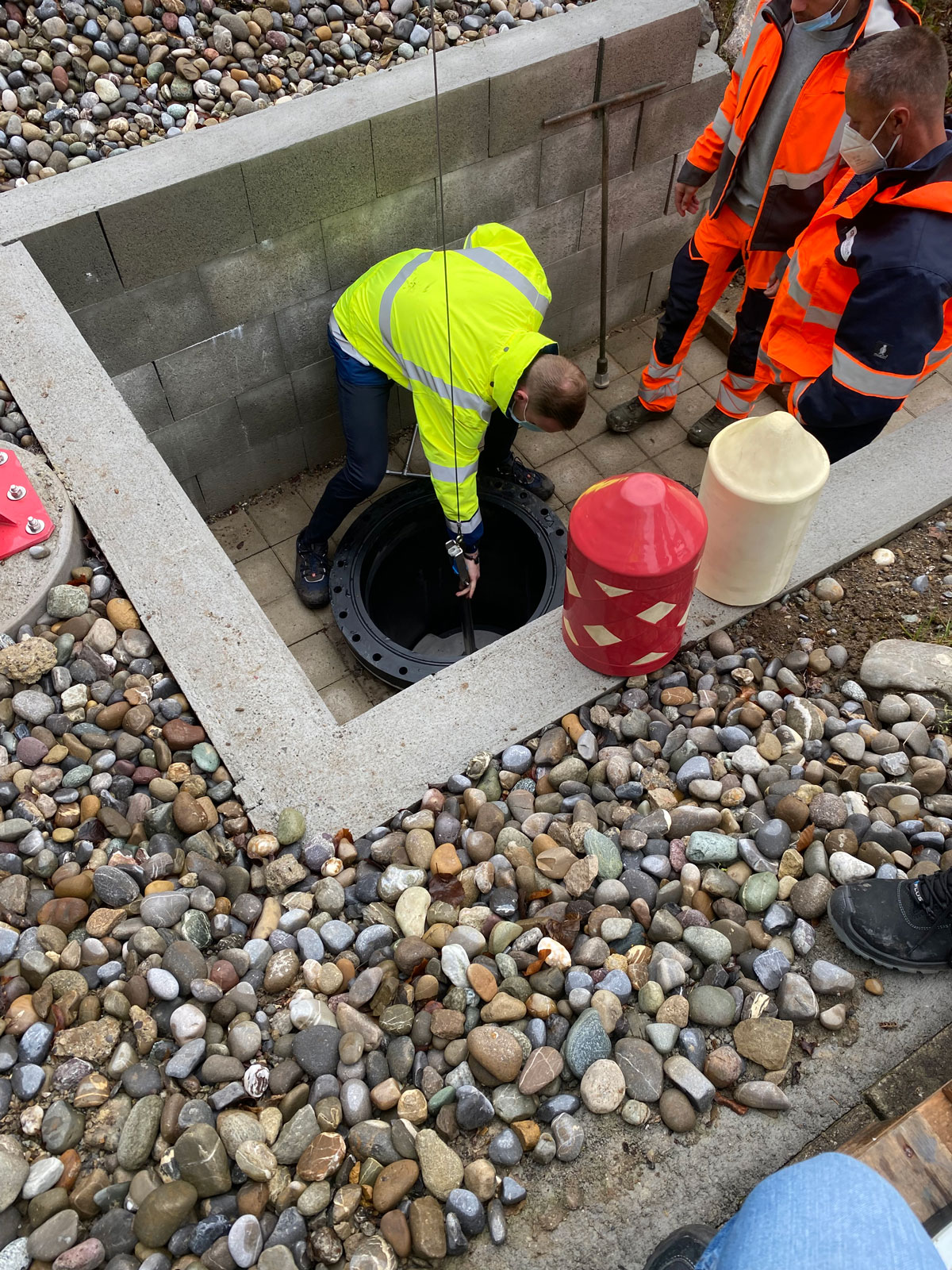
In order to benefit from the advantages of managing a larger wastewater treatment plant (WWTP), the smaller WWTPs Nidermatt and Rheinsfelden in Glattfelden were replaced by a pumping station that conveys the wastewater produced to the WWTP Stampfi in Eglisau. This measure made it possible to improve both water protection and operational safety in a targeted manner. The integration of the pumping station control into the control system of the WWTP ensures a continuous and optimized inflow to the WWTP. The catchment area of the current pumping station in Rheinsfelden includes several restaurants. Not least because of this, active management of the pressure line is necessary.
The problem of increasing deposits in Glattfelden has become apparent in that the power consumption of the pumps has successively increased, but the flow rate has decreased. The pumps were no longer running at their designed operating point, and the flow rate was no longer sufficient. Patrick Frei, the responsible wastewater treatment supervisor of the Glattfelden municipality, decided to clean the pressure line and came across pigging.
Pigging: a proven and gentle way to clean pressure pipes
The conveyance of wastewater that has not been pre-cleaned, especially in pressure pipes, can lead to deposits. . These are favoured by the oxygen-reducing conditions that occur due to the regular operation of the pumps. . In a specific case, this phenomenon could be determined by a higher power consumption of the pumps or a reduced flow rate. A need for action was indicated.
In the search for a proven and gentle way to clean the pressure line, the pigging process was recommended: originally from the petroleum industry, where the reliability of infrastructure systems is of utmost (also financial) importance, this is a tried and tested, purely hydraulic-mechanical cleaning process that can be used to remove highly viscous liquids, pasty media such as grease deposits, even powders and granulates from line systems almost completely. A cartridge-shaped, flexible object, the pig, is pumped through the pipe system with the wastewater flow. This process is called “pigging”. This technique is ideally suited for sewage pipes in addition to industrially used pipe systems. This technology is ideal for wastewater pipelines in addition to industrially used piping systems.
The ideal solution for the Glattfelden municipality: the Quick-Pig pig trap
The greatest challenge in pigging is usually the introduction of the pig into the pipeline. Without a suitable pig trap, the existing pipeline must be dismantled and opened. A procedure that Frei wanted to improve with regular pigging of his pressure pipeline. “The effort for the operation is enormous. Ensuring hygiene and occupational safety for my employees also requires the utmost attention.” Together with Franz Störch from CSD Ingenieure AG, a suitable pig trap was selected.
Due to the limited space available, a pig trap ideally had to be placed outside the pumping station. During the research, they came across an innovative development by the Reinert-Ritz company from Germany: the Quick-Pig.
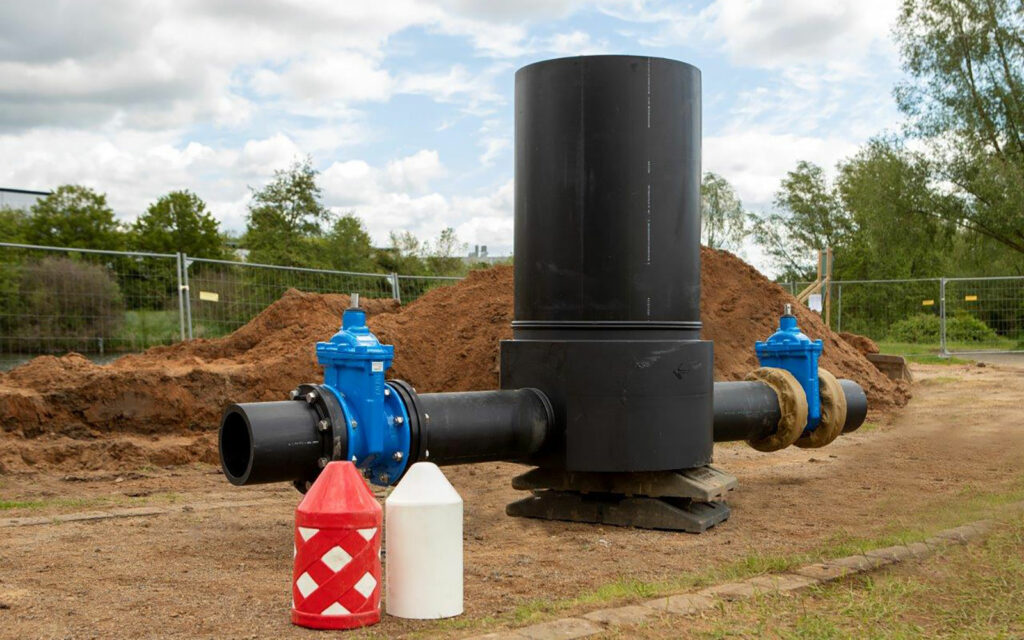
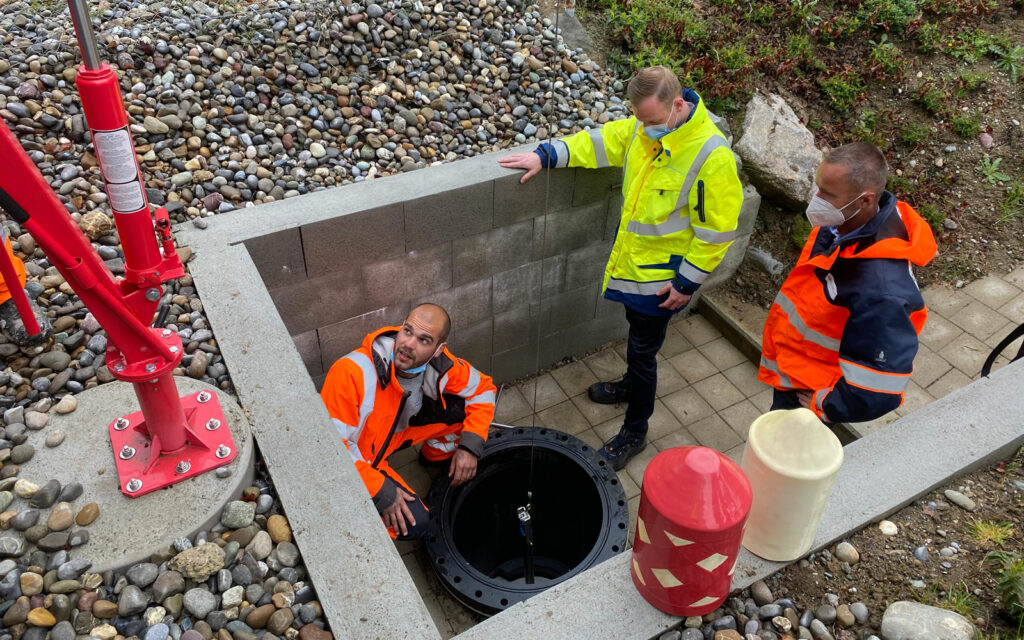
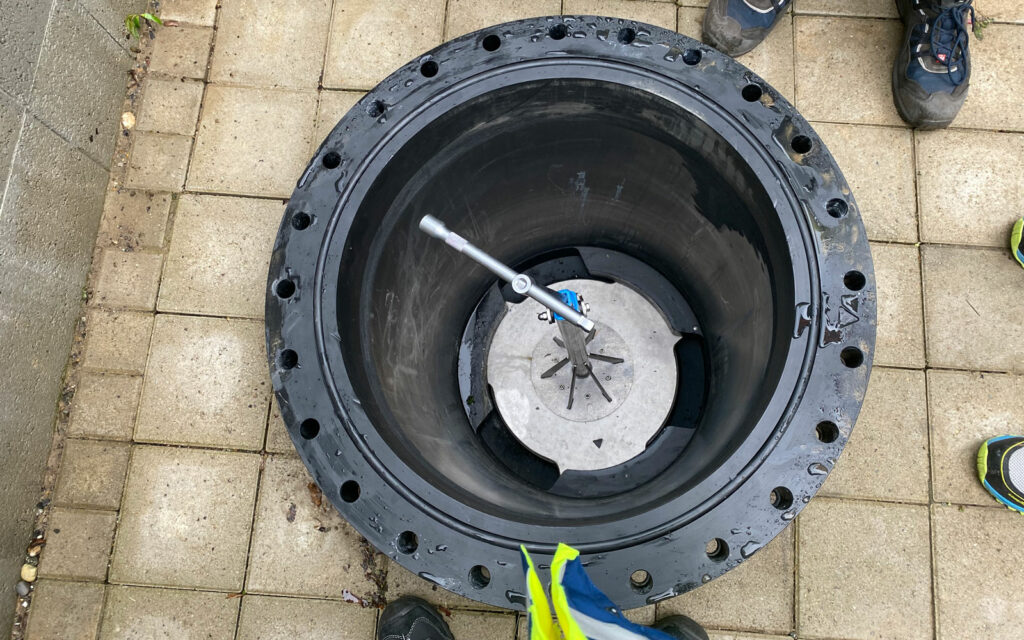
The Quick-Pig pigging station – for quick control and easy cleaning.
The Quick-Pig pigging station is made entirely of polyethylene and is therefore resistant to corrosion and other potential hazards. The solution is manufactured from DN 50 / 63 mm up to and including DN 350/355 mm and is suitable for both new pipes and retrofitting. The dome, which extends to the top of the ground, eliminates the need for a manhole. This protects employees from possible accidents and eliminates the need for cost-intensive manhole restoration.

Inside the pig station is the launcher that is located in the pipeline during everyday operation. This enables a quick inspection of the pipeline and also a quick insertion of the pig. The launcher is available in different versions. The basic version is without any add-on. Then there is the option of the 2-inch flushing connection, which enables the pipeline to be additionally flushed with foreign medium. For larger dimensions, there is the optional 4-inch flushing connection. Furthermore, it is possible to equip the pigging station with an airvalve. This valve is mounted on the 2-inch coupling and expands the options.
As a counterpart to the launcher, there is the receiver. This makes it possible to catch the pig from the pipe by means of an additional station. The receiver is not in the pipeline during everyday operation and is only used for the pigging process. The receiver is also available with the option of a flushing connection.

Pigging in Glattfelden: Pumps back to operating point
The result of the pigging operation in Glattfelden could be easily and visually observed at the receiver manhole: the discharged dirt load, which the pig was pushing ahead of it, visibly increased steadily until the pig finally reached the manhole. In addition to the visual success check, it became apparent that the designed power consumption of the pumps was restored and that the pumps were again running at the designed operating point with increased flow.
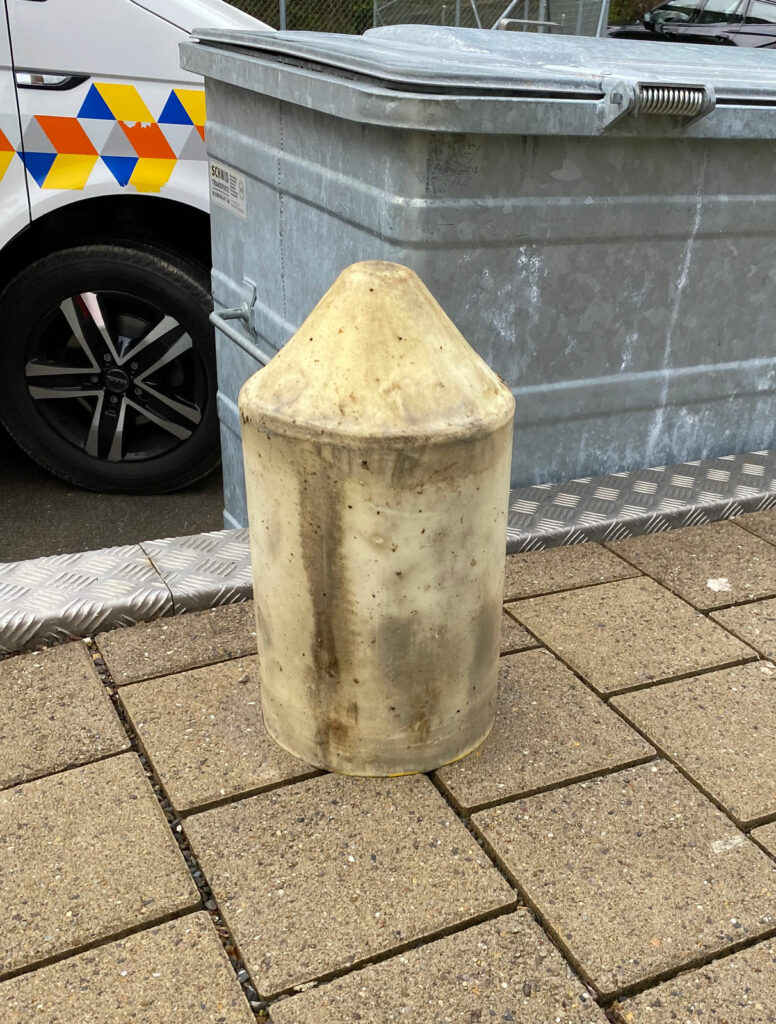
Practice shows: Quick-Pig facilitates maintenance and cleaning of sewage pressure pipes
“The Quick-Pig concept has great advantages for our operation. We want to actively and optimally manage the pressure pipeline to ensure smooth operation. Before the pig trap was installed, it was not just a day’s work to pig the pressure pipeline. Also, the staff didn’t necessarily care for this work, as the installation of the pig was time-consuming and you couldn’t avoid contact with the dirty water in most cases” explains Frei. “With the Quick-Pig, pigging can now be much more easily incorporated into the maintenance process and is also much more efficient due to less staff involvement and shorter intervention times!”
The associated trapping station has already been ordered and was installed and put into operation in December.
Client: Municipality of Glattfelden
Master builder: Peter Zolliger, Glattfelden
Engineer: CSD Ingenieure AG, Brugg
Supplier: Reinert Ritz GmbH, Deutschland

Download the technical paper from Aqua & Gas as a PDF here:
More about inspection and cleaning of pressure pipelines
We will be happy to introduce you to the possibilities with the Quick-Pig pigging station, contact us now:
You can find more on the subject of pigging, purging, aeration and deaeration in our theme world:
To find out how Quick-Pig works and what options are available, see our Quick-Pig and PE 100 inspection ports product page:
Keywords
About the author
UP TO DATE
Subscripe to our newsletter.
More topics
Related articles
The Quick-Pig pig trap requires significantly less coordination and fewer trades compared to a manhole solution. This allows for minimally invasive integration into pipeline systems, even at a later date. And for the operator, the Quick-Pig scores with very safe working from the top of the ground. Read in this article: Why the Quick-Pig Station is now becoming Olympic.
Reinert-Ritz GmbH develops innovative products made of thermoplastic material. The result of the experience gained in this way are moulded parts that are not available on the market as standard in these sizes. In addition to their size, these products convince more and more new customers worldwide with their quality and safety. With its many years of experience, seamless quality assurance and high production quality, Reinert-Ritz was also able to convince the planners of this major project.
Pigging a pipeline must become easier and safer! Without a complex manhole, without time-consuming ventilation of the manhole, directly from the street, made of PE 100 and corrosion-free. With these requirements, Hamburg’s municipal drainage system (now Hamburg Wasser) approached Reinert-Ritz GmbH from Nordhorn. The fittings manufacturer developed a station that enables fast, safe pigging without a manhole and has been used successfully in various projects to date.






